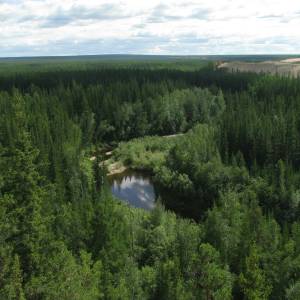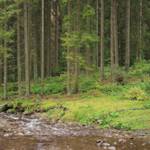West Siberian Taiga
2023 CE • Siberia
"A vast lowland, the West Siberian Taiga contains some of the world’s most extensive forests and the largest peatlands. Coniferous forests, swamps, bogs, fens, rivers and lakes support numerous invertebrates, fish, small mammals and birds. Huge areas of wilderness host brown bears, grey wolves, Eurasian lynx, reindeer and sable . . . The wetland conditions lead to a profusion of insects, in turn supporting numerous bird species, some migrating through the area and others breeding in the short summer. The critically endangered yellow-breasted buntings and Siberian cranes, endangered white-headed duck, and many vulnerable species such as the greater-spotted eagle, red-breasted goose, horned grebe, and rustic bunting rely on the undisturbed habitat . . . Large areas of the ecoregion remain undisturbed due to the low population density, waterlogged state and short summer season . . . The peatlands are a globally important source of atmospheric methane and sink of carbon dioxide, vital factors when considering the impacts of climate change. About 70% of Russia’s oil and natural gas extraction occurs in Western Siberia with associated habitat destruction and pollution incidents. Temperatures are increasing more than the global average and the impacts of thawing permafrost, associated plant productivity and hydrology changes, shifting species ranges, droughts, increased forest fires and tree disease outbreaks could be enormous."
"West Siberian Taiga," One Earth.
Image: Tatiana Bulyonkova from Novosibirsk, Russia, CC BY-SA 2.0, via Wikimedia Commons


Learn about Maya Lin’s fifth and final memorial: a multi-platform science based artwork that presents an ecological history of our world - past, present, and future.

Discover ecological histories and stories of former abundance, loss, and recovery on the map of memory.

Learn how we can reduce our emissions and protect and restore species and habitats – around the world.

See how art can help us rethink the problems we face, and give us hope that each one of us can make a difference.

Help make a global memorial something personal and close to home. Share your stories of the natural world.


